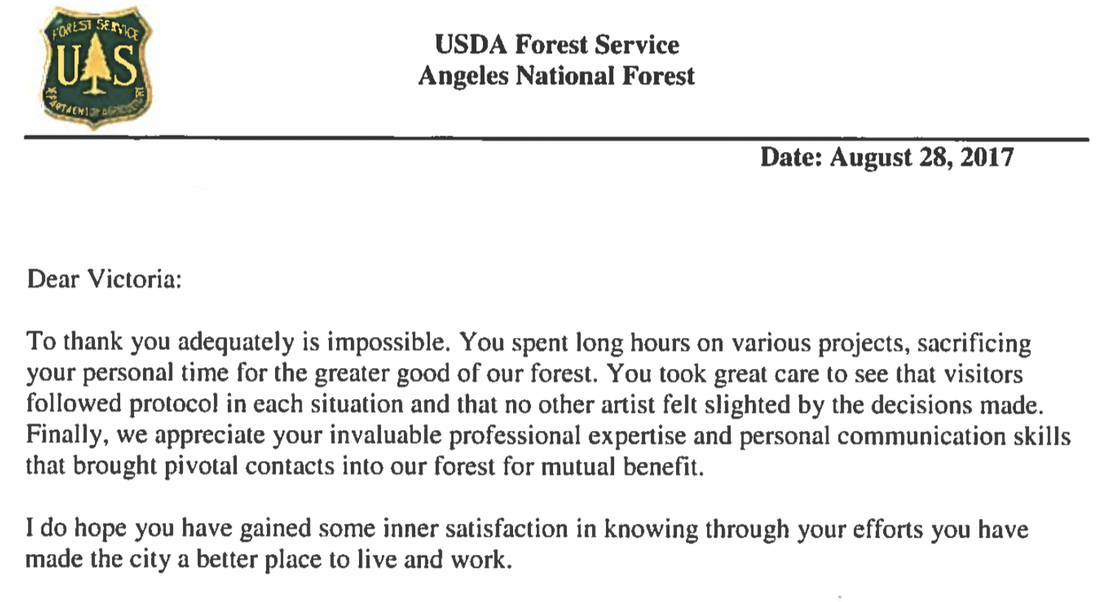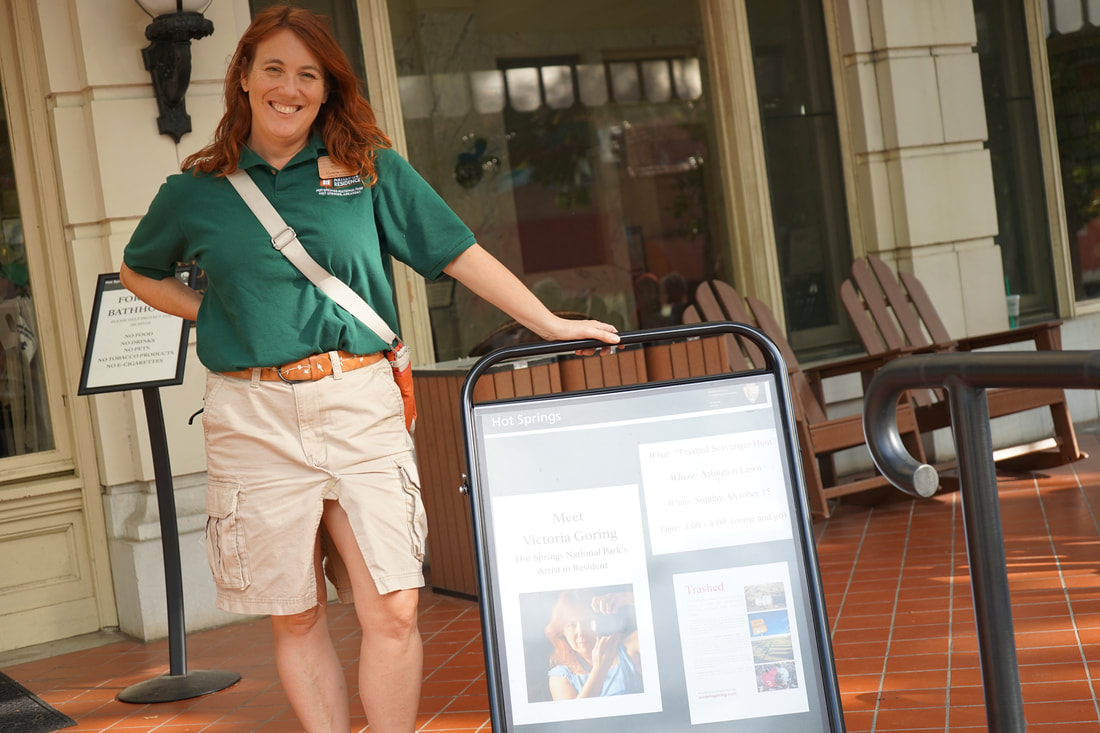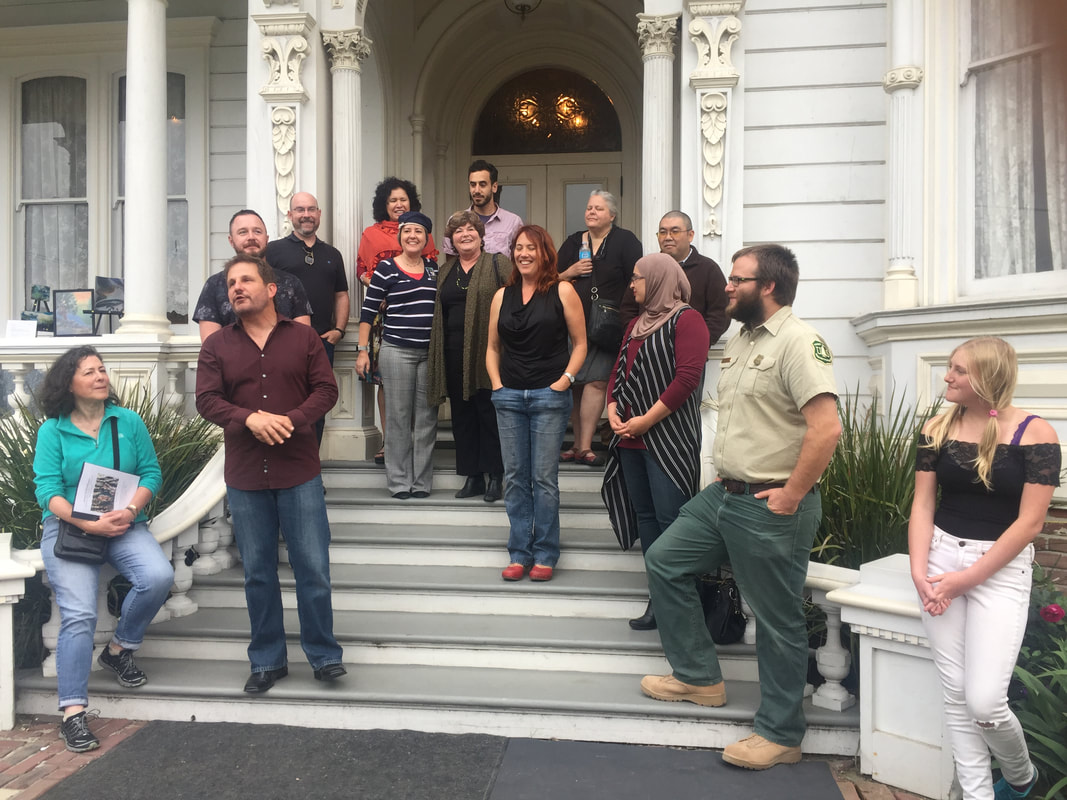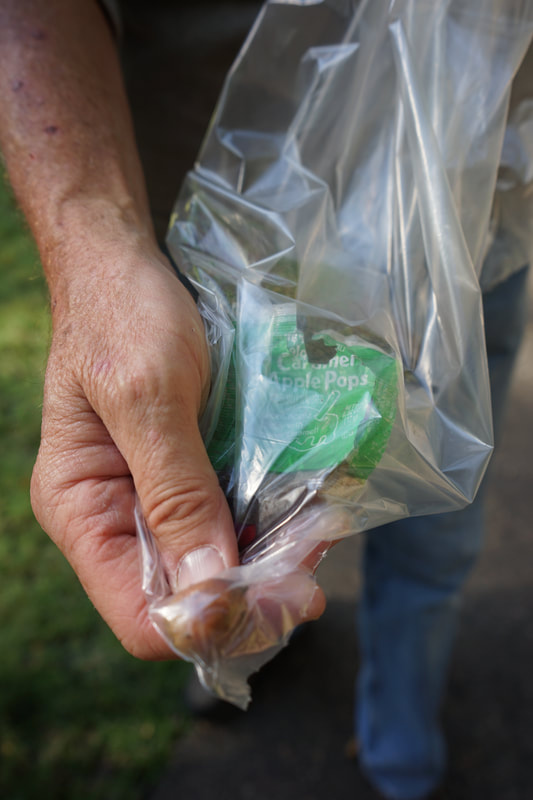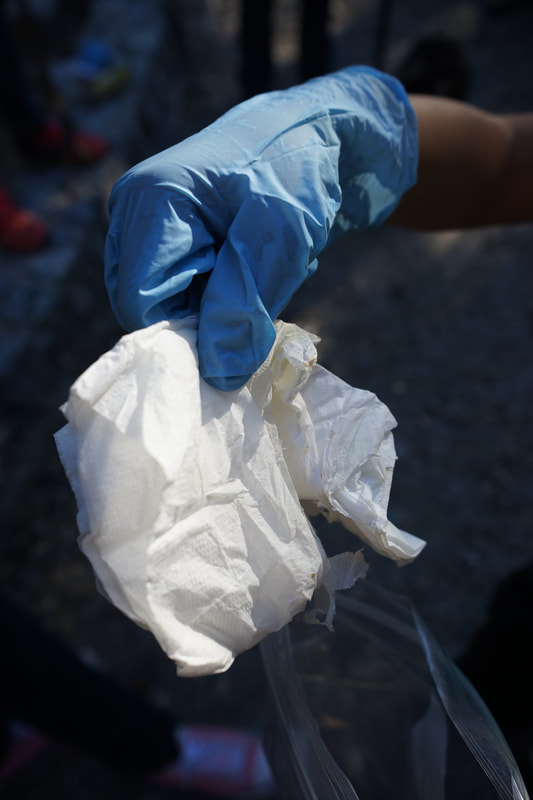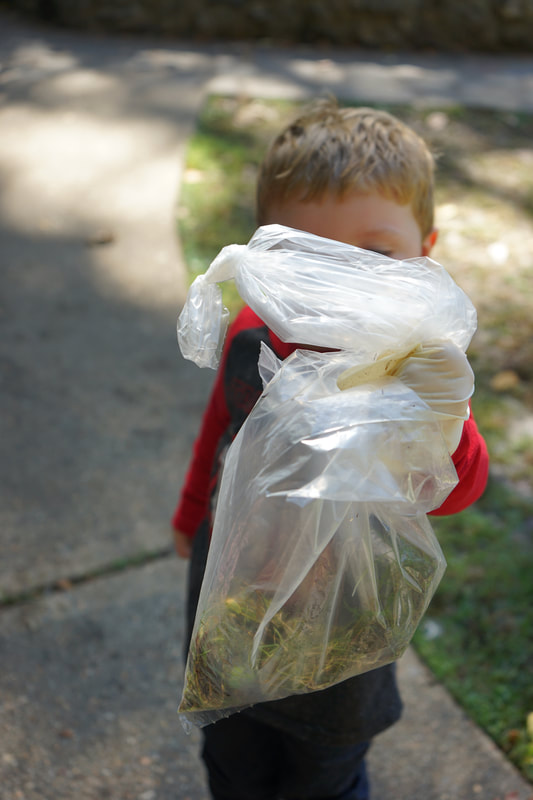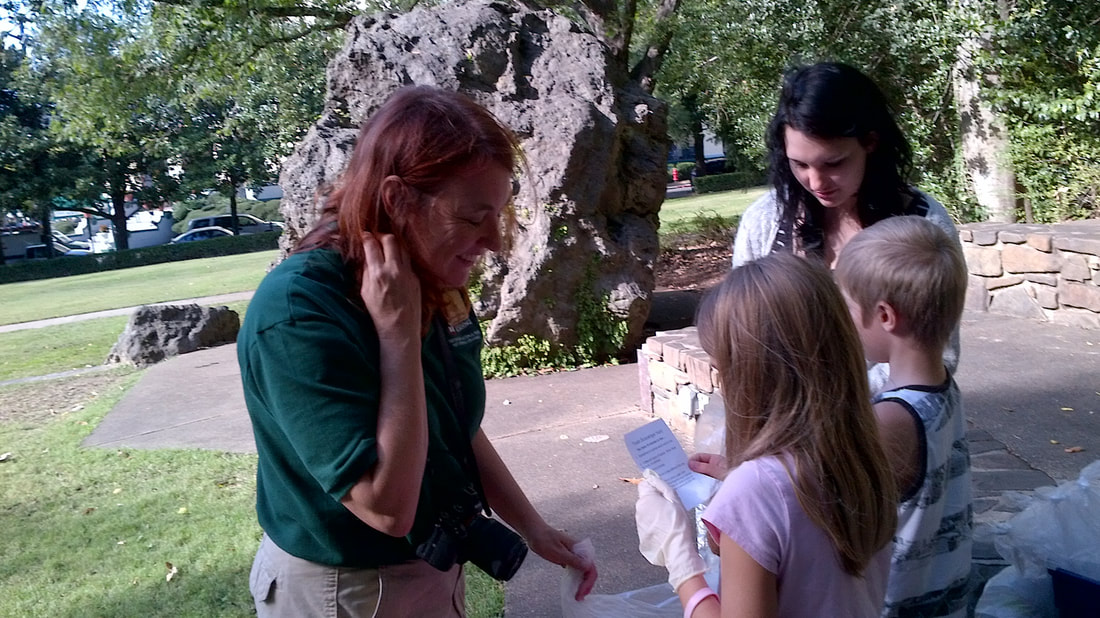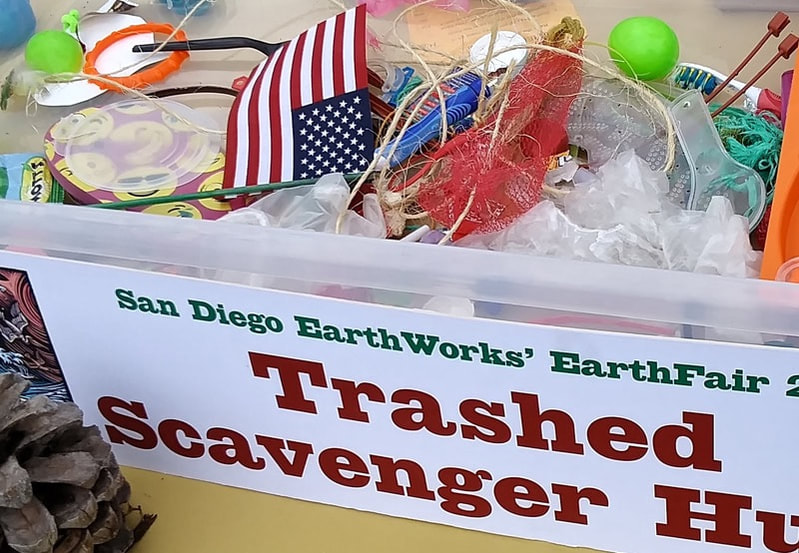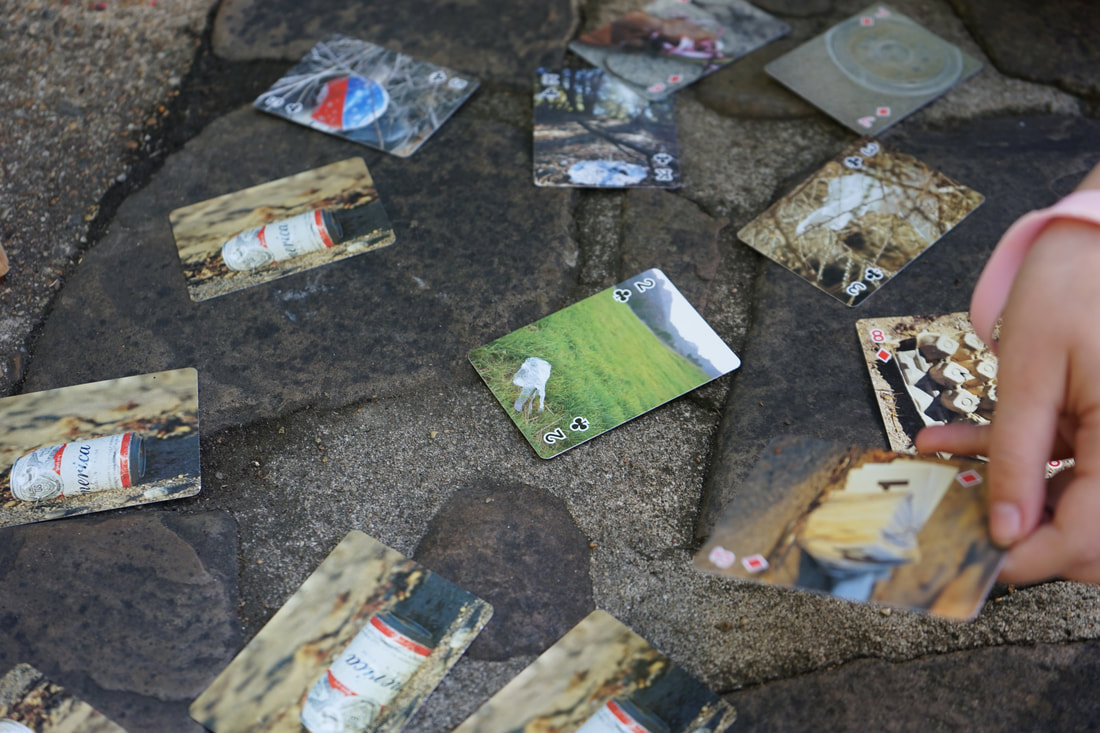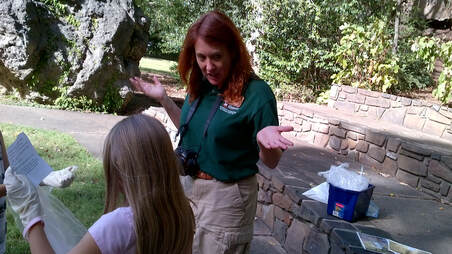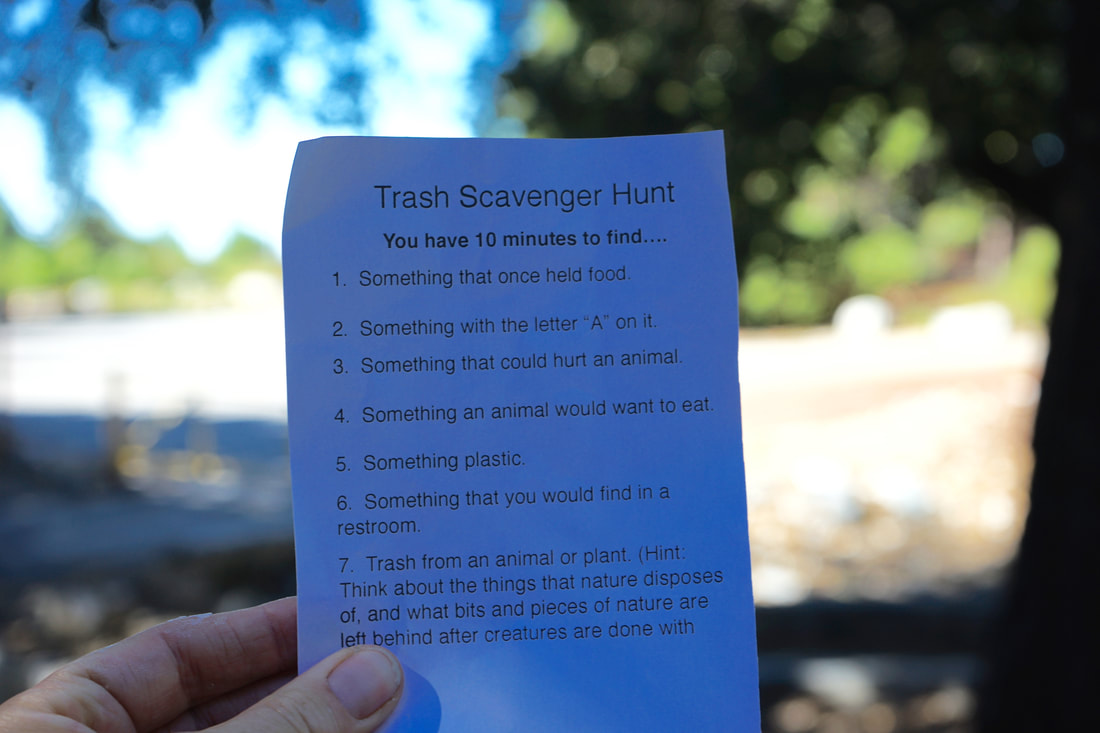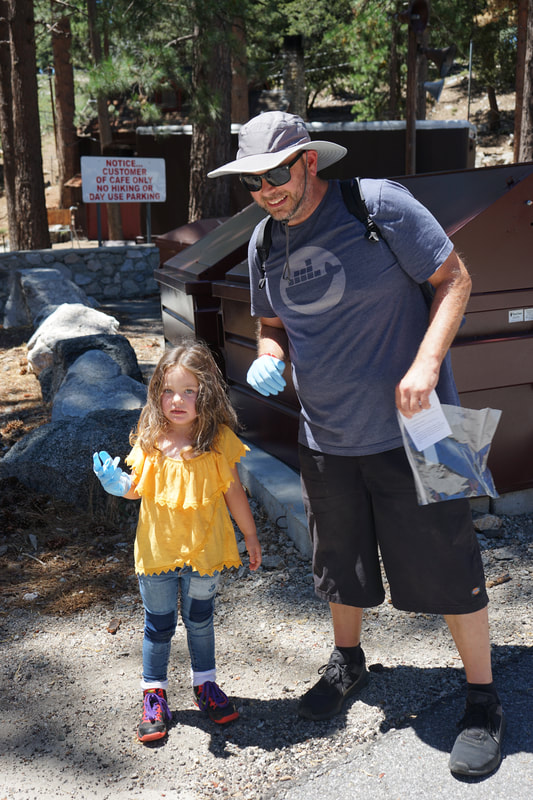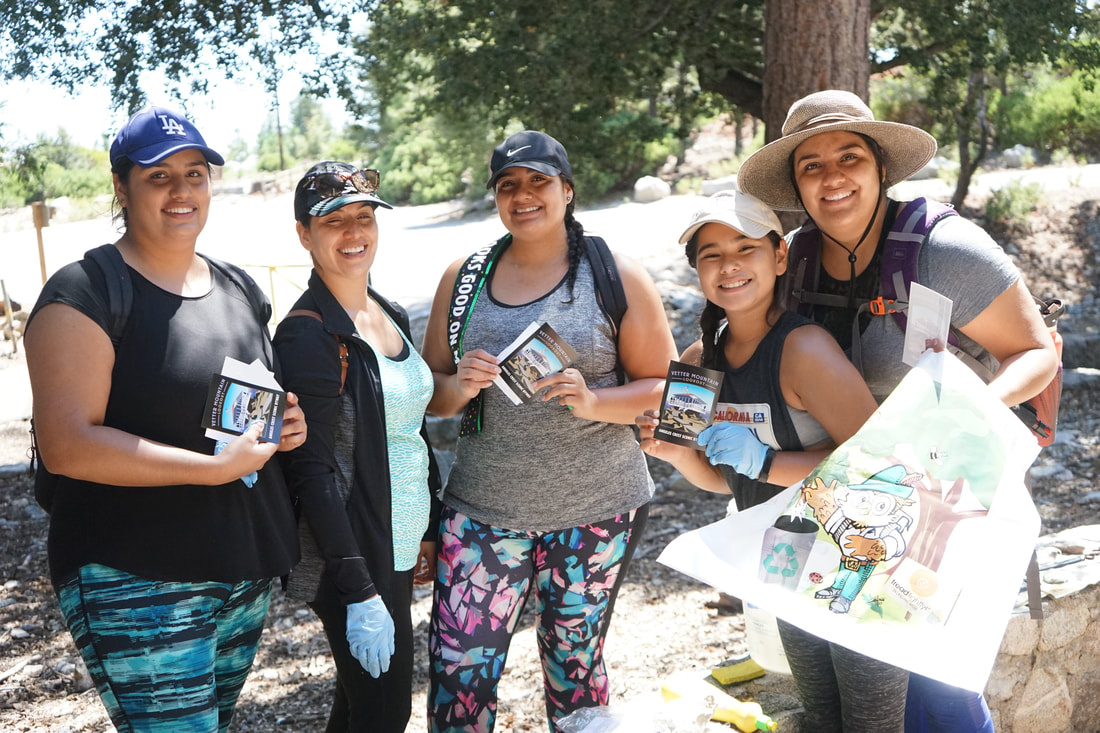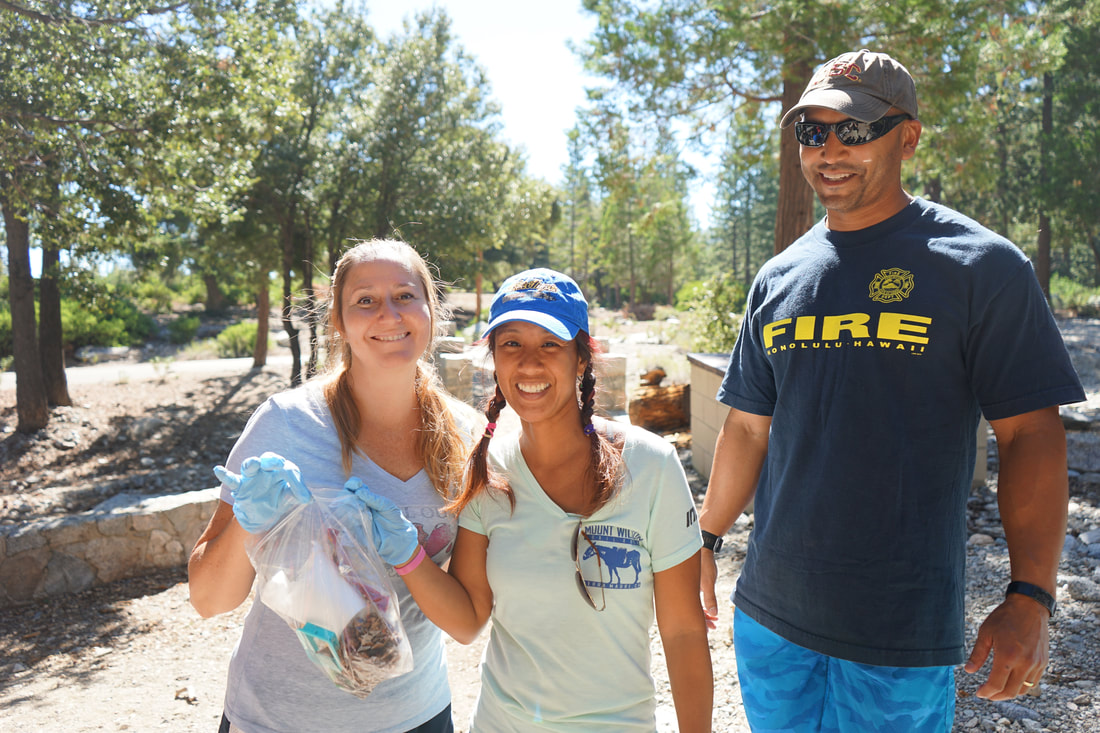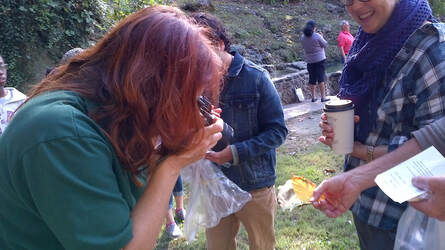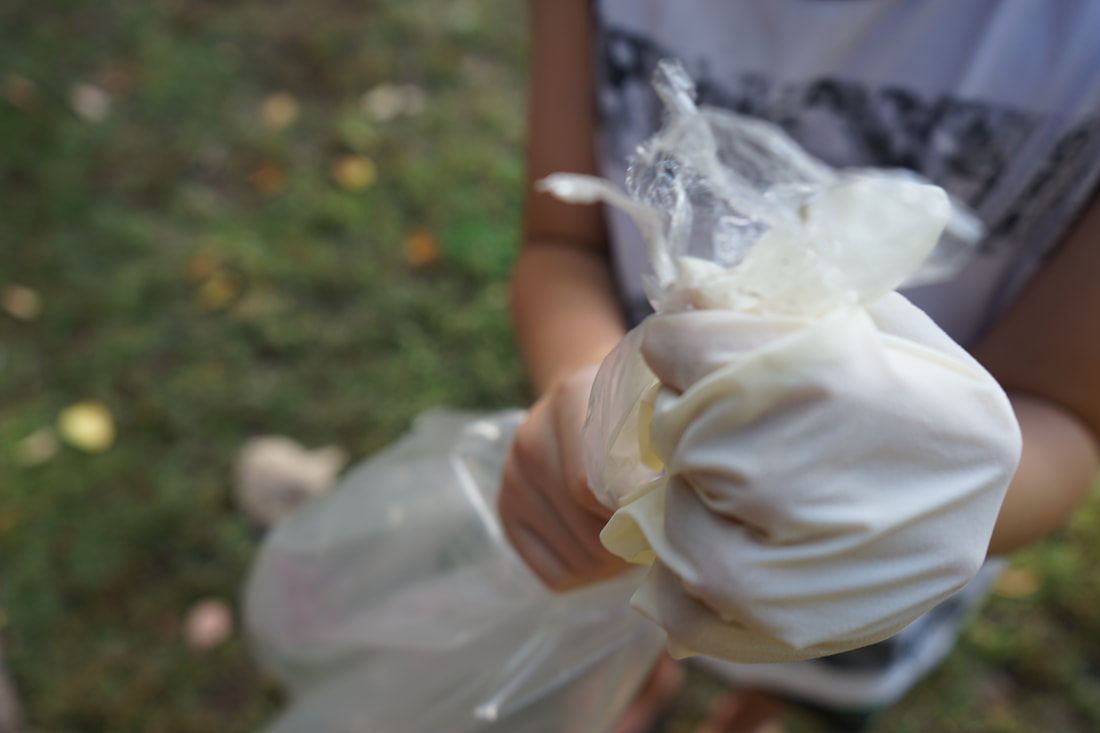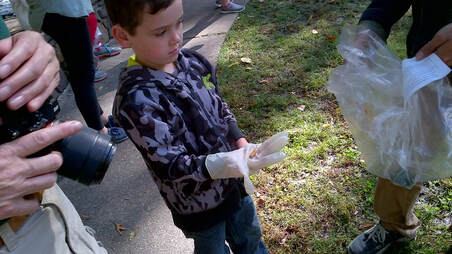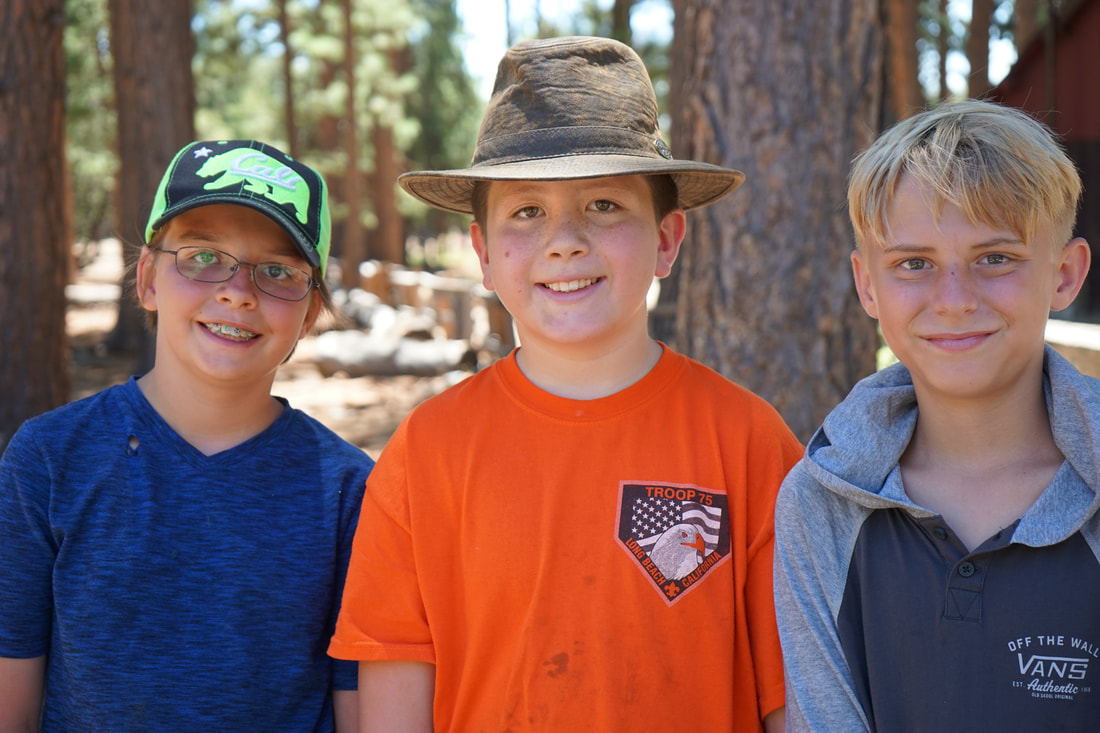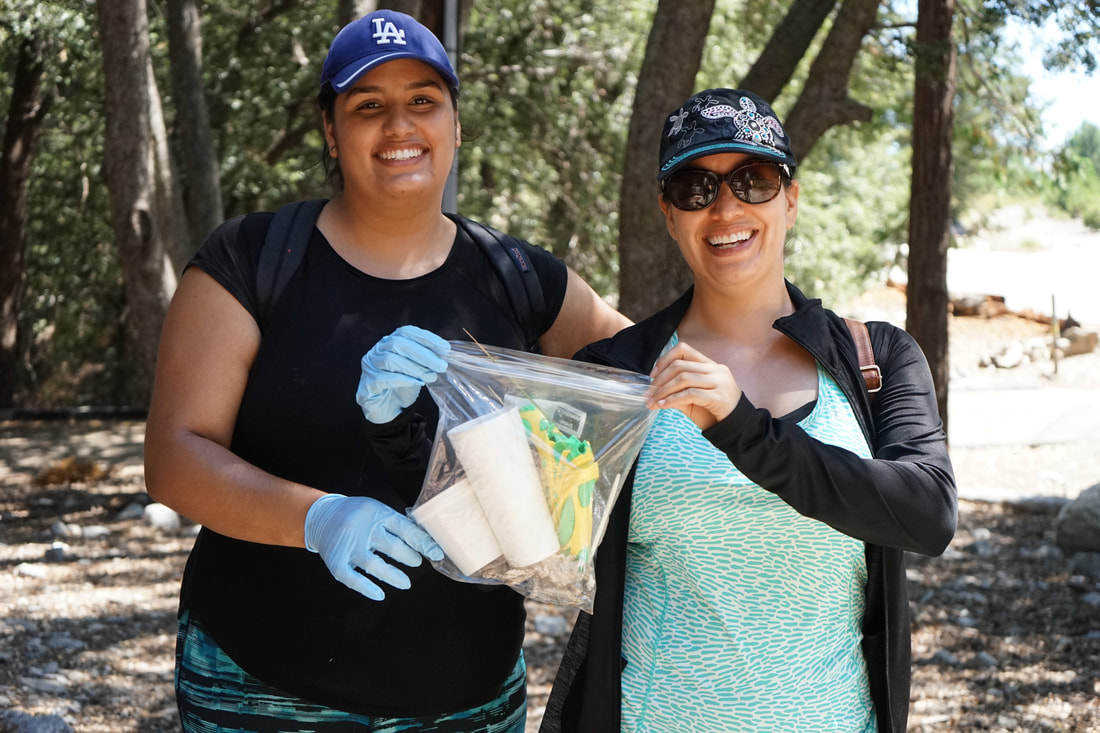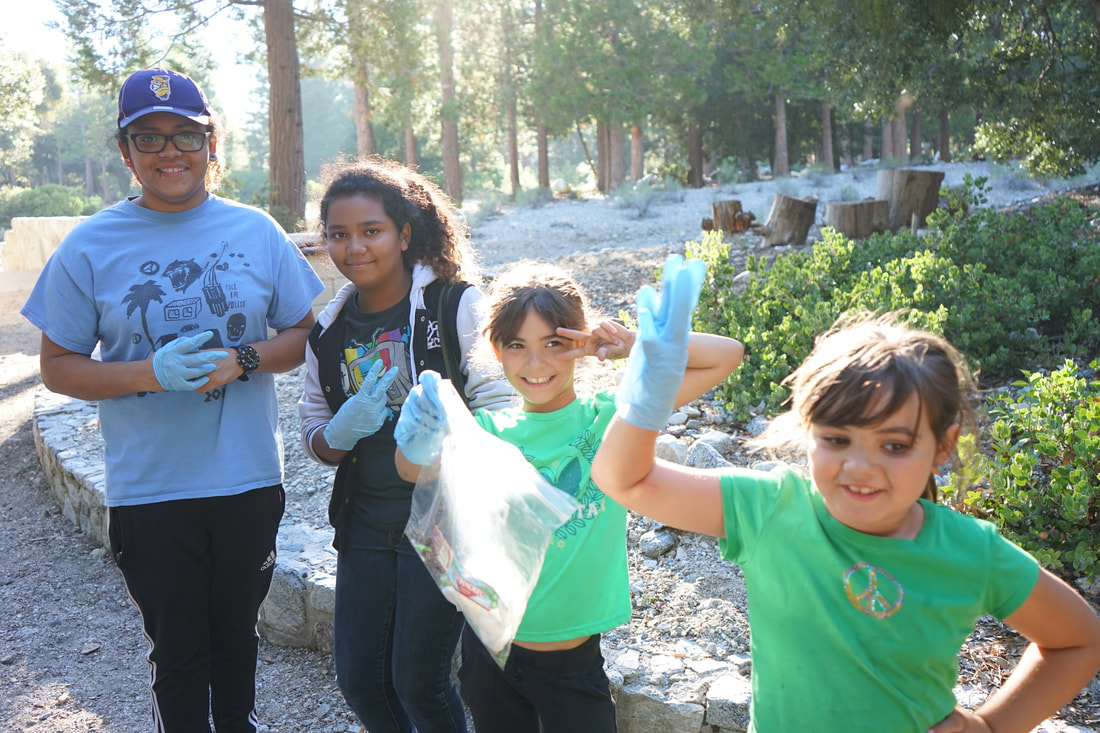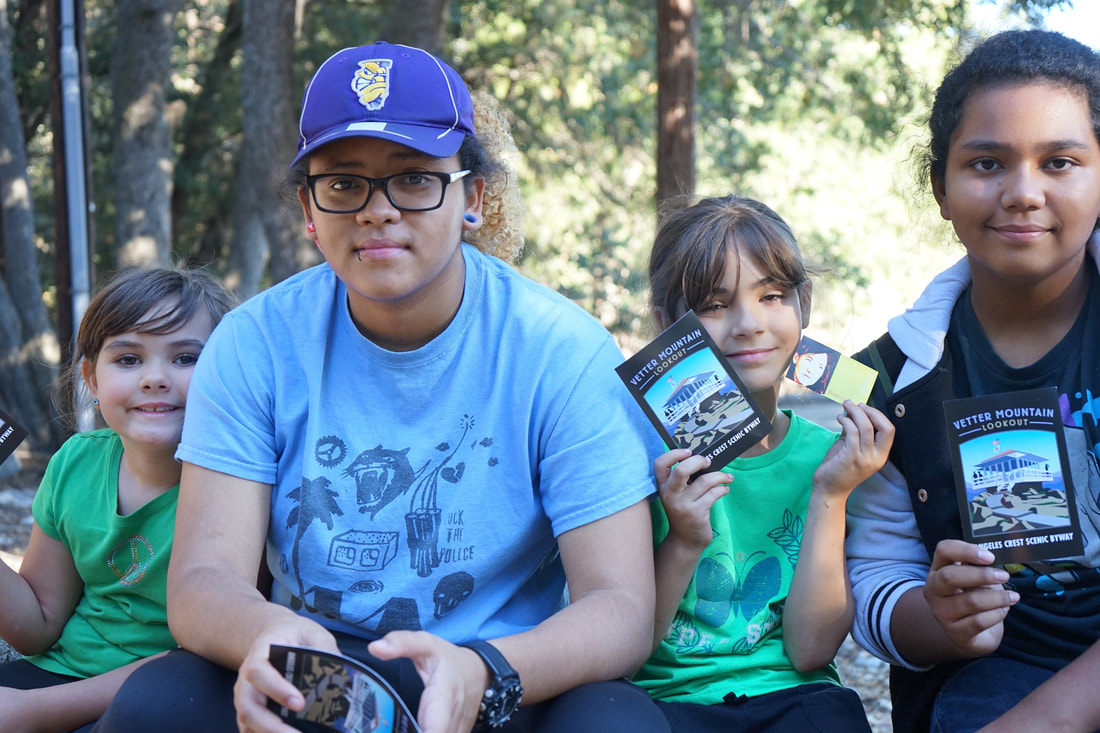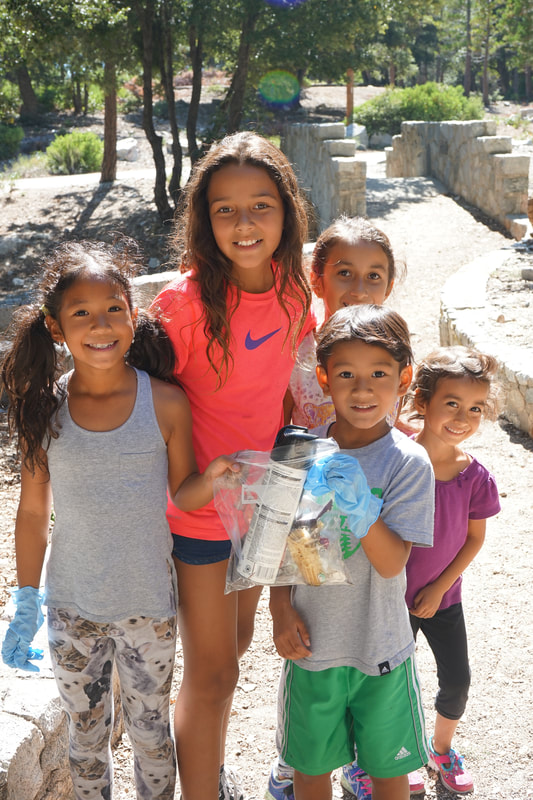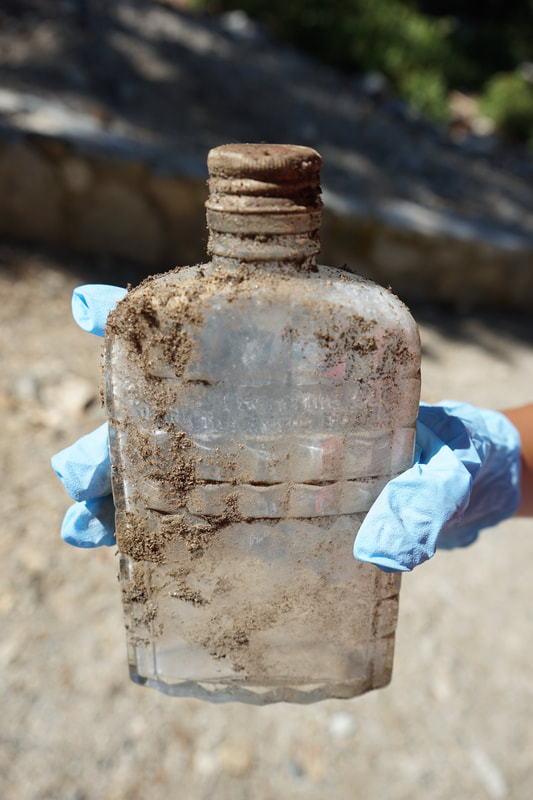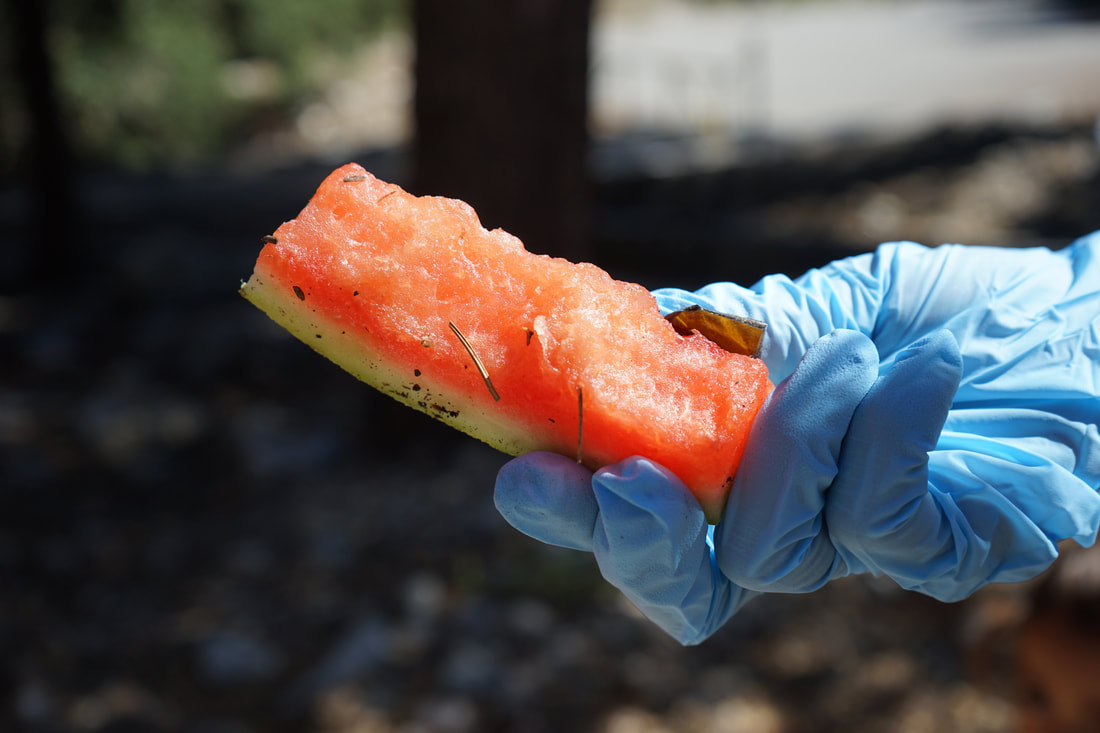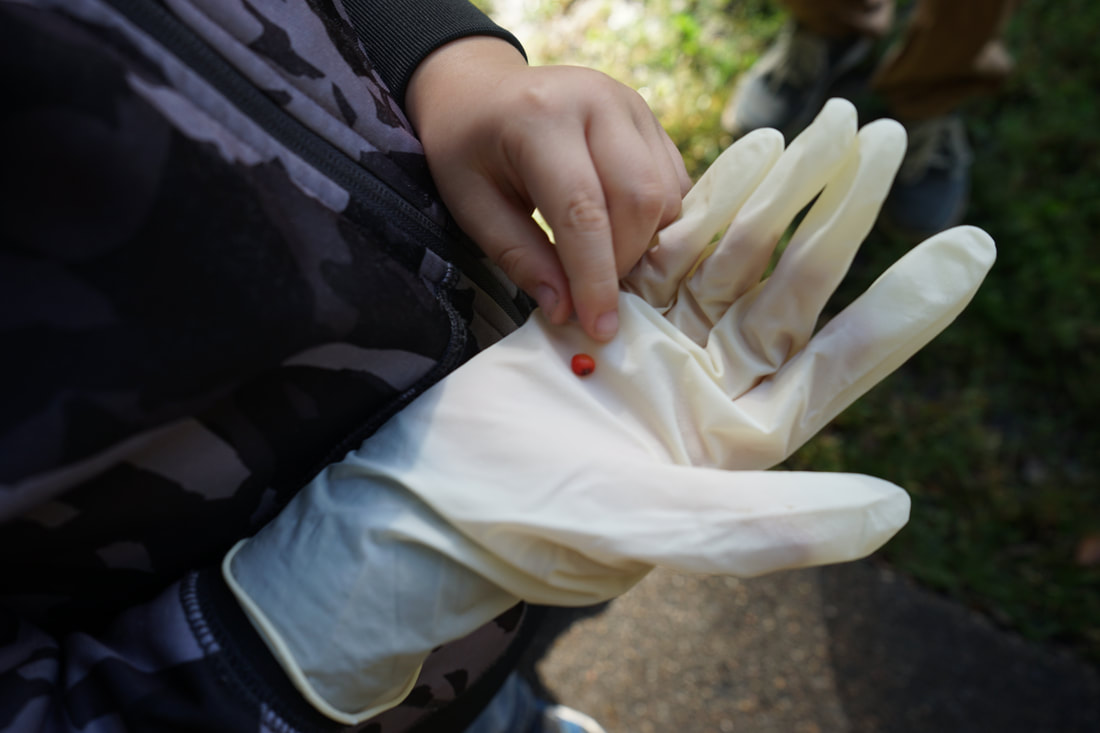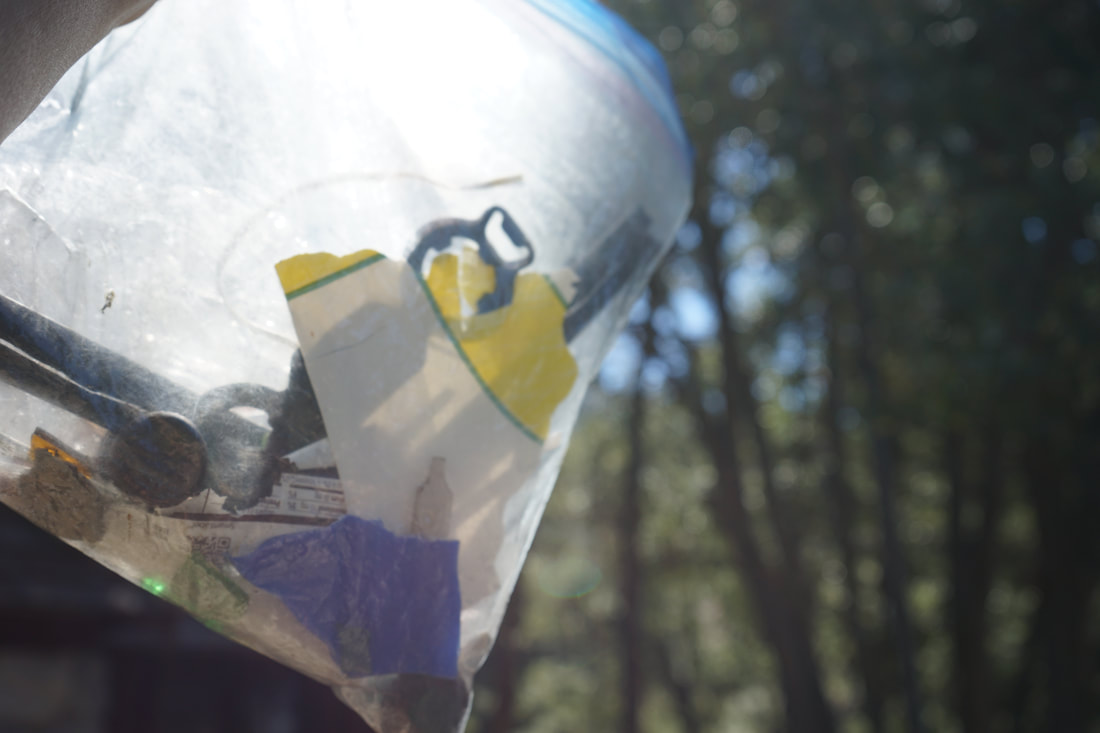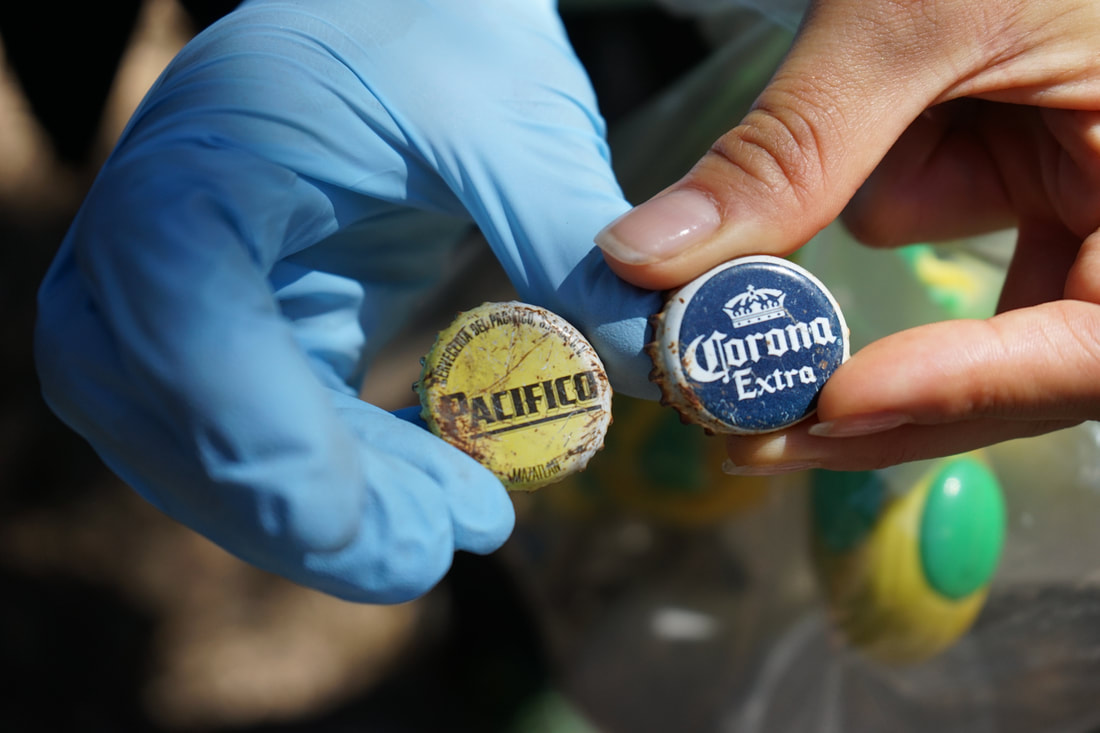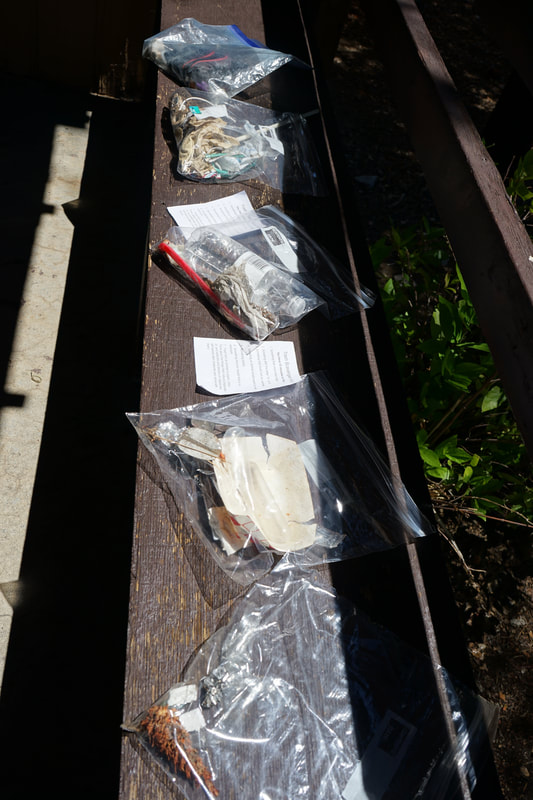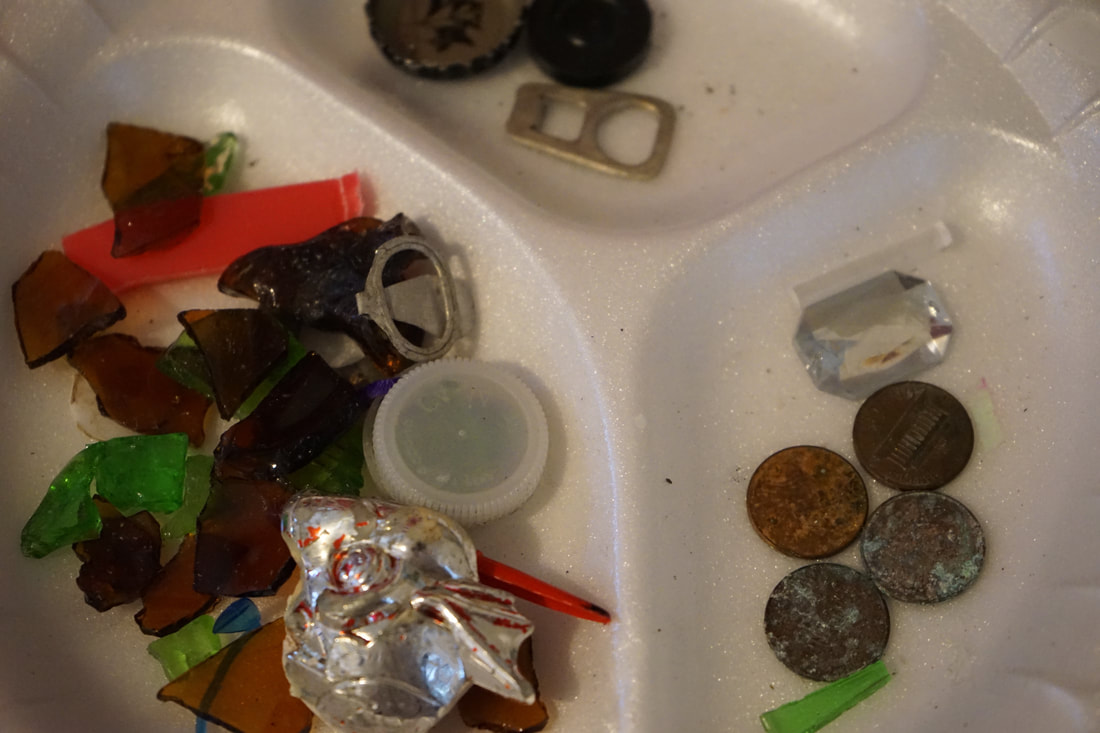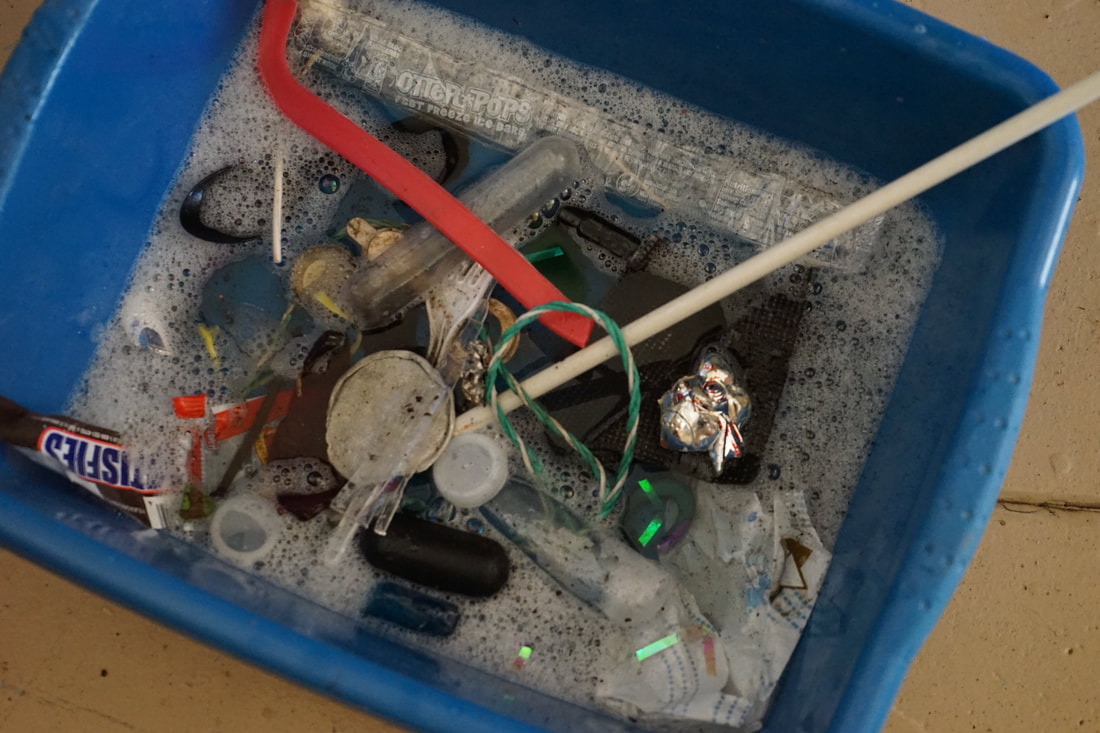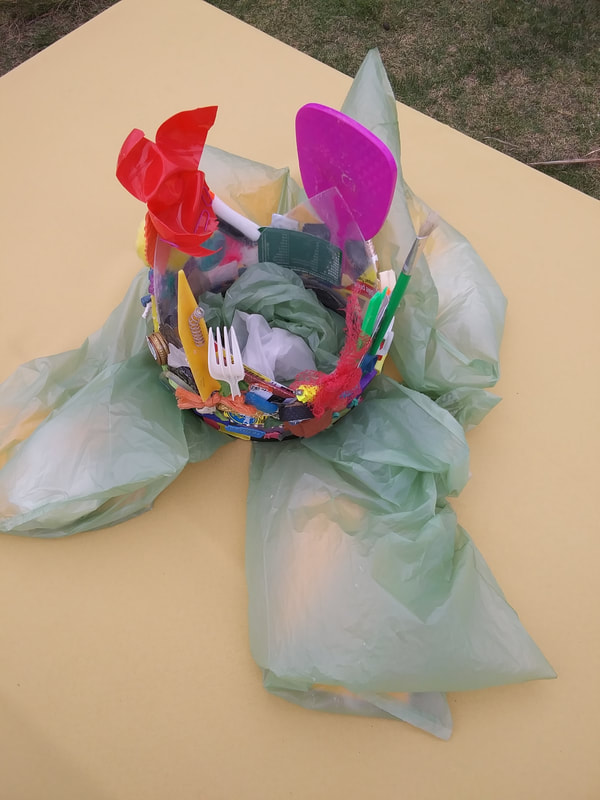|
Trashed Scavenger Hunt
A scavenger hunt that combines thoughtful discussion of trash in national lands with a high energy family friendly activity. Artistically, Trashed accomplishes Ms. Goring's personal goal of having the viewer engage in thoughtful discussion about the relationship of trash in nature. As a community event, Trashed brings people together of different ages and background, and anyone, regardless of age or ability, can participate. This activity literally puts the visitor into the environment, exploring in a manner they would not previously have employed. Because of the competitive aspect, participants have lots of fun, and their high energy is contagious to all: Everyone walks away happy, knowing they have made the forest a bit safer for wildlife. Practically, the environment benefits from the removal of trash, and the trash is then cleaned and recycled into art supplies. |
The TRASHED workshop:
Discussion. Participation. Engagement. Creation.
Discussion by Victoria Goring
First I show participants my photos of trash in nature. I asked open ended questions: What did they see? (One little girl saw trash as ‘a flower’). Often I have them flip over my playing cars, which have 54 of my original photos, so the participants can discover what type of artist I am. I emphasize that it’s art: There are no right and wrong answers.
How do the photos make them feel? Why do they think I would photograph the relationship between art and nature?
Often the participants are amazed that someone can make art out of trash. Teens usually love this. Altering perceptions of what art can be is an important as altering our perception of how fun taking care of our environment can be.
How do the photos make them feel? Why do they think I would photograph the relationship between art and nature?
Often the participants are amazed that someone can make art out of trash. Teens usually love this. Altering perceptions of what art can be is an important as altering our perception of how fun taking care of our environment can be.
Participation
Participation
I split participants into teams so that they can race, which heightens the excitement and fun of the hunt. small I have them create team names.
Each team is given:
A plastic glove
A clear baggie
A list of items to find.*
We go over safety, then the teams race to see how fast they can collect the items.
*I have lists that are easy to advanced, and each list is written to accommodate each ecosystem.
Active Exploration
Watching teams race into the forest to explore, filled with excitement is a joyous event to behold. Cries of “This is fun!” echoing throughout a park is incredibly gratifying. Often families stay and kept collecting trash after the hunt is over.
I split participants into teams so that they can race, which heightens the excitement and fun of the hunt. small I have them create team names.
Each team is given:
A plastic glove
A clear baggie
A list of items to find.*
We go over safety, then the teams race to see how fast they can collect the items.
*I have lists that are easy to advanced, and each list is written to accommodate each ecosystem.
Active Exploration
Watching teams race into the forest to explore, filled with excitement is a joyous event to behold. Cries of “This is fun!” echoing throughout a park is incredibly gratifying. Often families stay and kept collecting trash after the hunt is over.
Engagement
When the teams return, we have a show-and-tell. This is a crucial part of the process, comparing found items. The sharing ranges from the disgusted to the delighted, depending on the finds. Again, making sure to congratulate all interpretations of each find is important.
Full of energy from the race, participants are now relaxed and energized, ready to voice their thoughts and opinions.
Discussions ensue: Why would someone bring this particular item into this environment? Where could this have been better disposed? When we toss our found leaves back onto the ground, is that littering?
Children are especially excited to learn which items can be recycled into art.
After the show-and-tell we sort the trash. We discuss where the items belong: What trash goes into the trash can? Why do we return the “nature” trash into nature?
Then we recycle what we can for art, washing it and turning it into art supplies. Participants are very excited that their hard found trash is going to be created into art. For the longer workshops, all participants now create their own sculptures.
Reward:
I take photos of the teams as their prizes, to reinforce the idea that a prize doesn’t have to be an object that may end up as more litter.
Everyone always tells me they had fun, parents thank me for making their kids exercise, and teens enjoy this activity. Several families stay and pick up more trash. Everyone is shocked by how quickly they are able to find all this trash.
Full of energy from the race, participants are now relaxed and energized, ready to voice their thoughts and opinions.
Discussions ensue: Why would someone bring this particular item into this environment? Where could this have been better disposed? When we toss our found leaves back onto the ground, is that littering?
Children are especially excited to learn which items can be recycled into art.
After the show-and-tell we sort the trash. We discuss where the items belong: What trash goes into the trash can? Why do we return the “nature” trash into nature?
Then we recycle what we can for art, washing it and turning it into art supplies. Participants are very excited that their hard found trash is going to be created into art. For the longer workshops, all participants now create their own sculptures.
Reward:
I take photos of the teams as their prizes, to reinforce the idea that a prize doesn’t have to be an object that may end up as more litter.
Everyone always tells me they had fun, parents thank me for making their kids exercise, and teens enjoy this activity. Several families stay and pick up more trash. Everyone is shocked by how quickly they are able to find all this trash.
Creation
Art from TRASH
Can something beautiful be created from trash?
Make your own sculpture form trash and find out!
In this hands on activity, artist Victoria Goring demonstrates how much fun it is to make sculptures out of trash. The variety of textures, shapes, and sizes trash provides make for a variety of inspiring art supplies. All you need to add is your imagination.
Sculptures created from trash takes some time and a few resources. However, it is a hugely gratifying activity, and the results are beautiful.
TIME: Minimum one hour. AGES: All ages. Younger children make clay sculptures then embed trash into it.
As the trash is being dried, participants brainstorm their sculpture ideas.
In a classroom setting, children work in teams to incorporate themes into one sculpture. Participants create their base of wire mesh or clay (depending on age). Then the participants add trash, creating their sculptures in a positive and nonjudgemental atmosphere. Ms. Goring has over a decade of teaching experience, and is an inspiring leader to families.
Can something beautiful be created from trash?
Make your own sculpture form trash and find out!
In this hands on activity, artist Victoria Goring demonstrates how much fun it is to make sculptures out of trash. The variety of textures, shapes, and sizes trash provides make for a variety of inspiring art supplies. All you need to add is your imagination.
Sculptures created from trash takes some time and a few resources. However, it is a hugely gratifying activity, and the results are beautiful.
TIME: Minimum one hour. AGES: All ages. Younger children make clay sculptures then embed trash into it.
As the trash is being dried, participants brainstorm their sculpture ideas.
In a classroom setting, children work in teams to incorporate themes into one sculpture. Participants create their base of wire mesh or clay (depending on age). Then the participants add trash, creating their sculptures in a positive and nonjudgemental atmosphere. Ms. Goring has over a decade of teaching experience, and is an inspiring leader to families.
